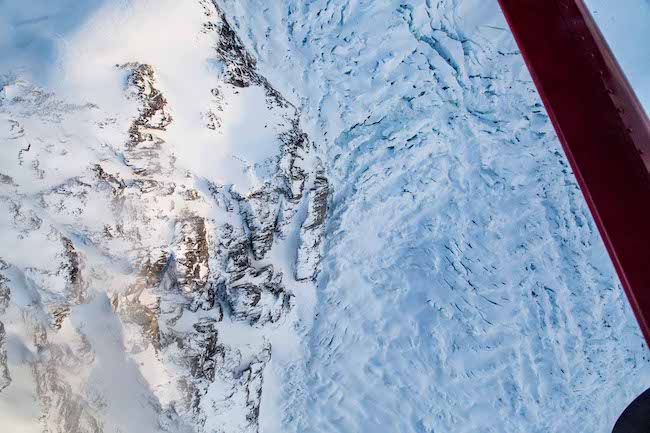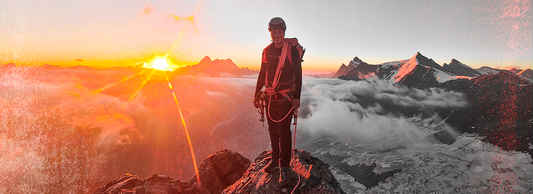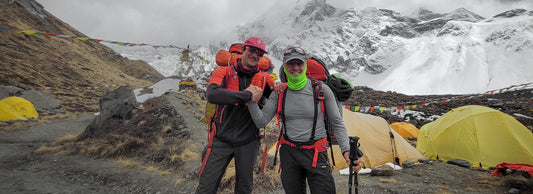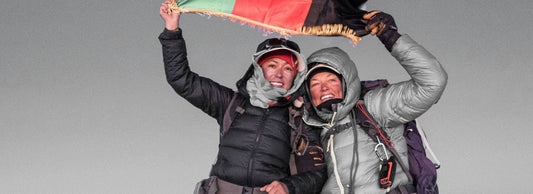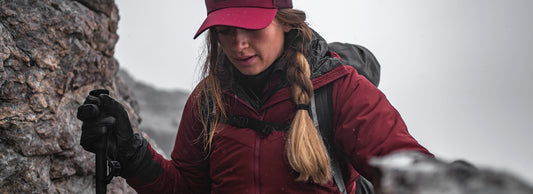It is omnipresent and yet surreal, global warming in everyday life. Our planet warms up every year, but we hardly notice it. We hear about retreating glaciers and softening permafrost...it doesn't really affect us, does it? 
I've been mountaineering for 40 years now, as a child with my father, as a teenager with friends, later as a mountain guide and professional alpinist. A lot has changed in the mountains over the years. Where we once gave ice courses there are huge heaps of rubble, paths such as via the Pasterze to the Großglockner are no longer accessible and even no longer possible due to the snow melting of the glacier, the glaciers in the Alps are disappearing more and more.
In 1991 I climbed the Bonatti pillar on the Dru with a friend, a few years later it just fell down...probably why? Softening of the permafrost and the resulting instability of a huge rock massif.
In November 1995 I went on skis across the Torre Glacier in Patagonia to the start of the Compressor Route on Cerro Torre, easy, easy, fast. I came back in 2012, the glacier was nowhere to be seen, immense masses of ice were missing, walking on skis was out of the question, the glacier was bare, jagged and the path difficult, hard to believe that it was 17 years here at the same time of year previously , there was a solid blanket of snow over the ice.
Global warming was very dramatic this year in the Karakorum. I was with Gerlinde Kaltenbrunner under the Shining Wall at Gasherbrum 4 in July and August. Due to the high temperatures, there was massive rockfall and icefall, which didn't even stop during the night. Getting in would have been far too dangerous. Even the NW ridge was not possible under these circumstances. At 8 a.m., streams ran out of the face at over 7000 meters and rocks as big as cars fell over us. The temperatures in the tent were unbearably high, we covered the tent with down jackets and sleeping bags and still we couldn't stand the enormous heat. Experience has shown that on bad weather days there is snowfall in the base camp at over 4000 meters, with us it rained continuously.

It quickly became clear to us that we were in the wrong (actually right) place at the wrong time. In summer, combined tours on large walls in the Karakoram are no longer possible, or only possible with an extremely high willingness to take risks. Conclusion, we will be back in late autumn.
On a rest day we visited friends at the K2 base camp, where I was already in 2019. I couldn't believe my eyes, the glacier and the moraines couldn't be seen again, everything was different, the Goowin-Austen glacier lost at least 50 meters in thickness in the 2 years, not a stone lay on the other .
On the only summit day in summer 2021 on K2, the temperatures were a whopping -6 degrees Celsius at 6 a.m. 15 years ago, temperatures below -20 degrees were considered exceptionally warm.
The direction obviously seems perfectly clear; the glaciers are melting, the ice walls are no longer possible on the high mountains, except in winter , increased risk of falling rocks due to snow melting, large rockfalls due to the softening of the permafrost, etc.
We mountaineers can and must adapt by choosing different routes or different seasons.
According to science, global warming can no longer be stopped and can only be delayed with great effort. Unfortunately, the majority of humanity does not want to make an effort.

